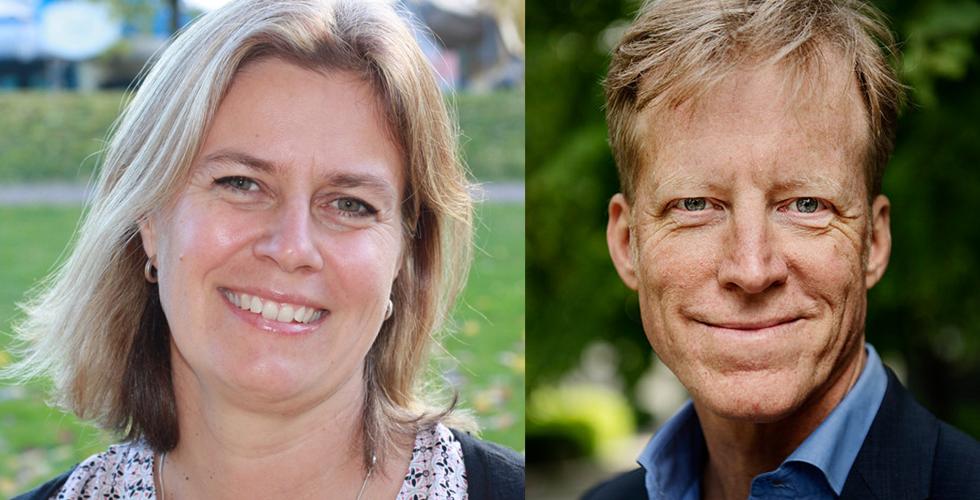Sweden has surveyed sexual harassment in academia
Over half of all female doctoral students have experienced unwanted sexual attention, reveals a new report from Sweden.
“This is the first time we have done a study across the entire academic sector, and it is actually the world’s largest survey on sexual harassment in the higher education sector,” says Fredrik Bondestam, director of the Swedish Secretariat for Gender Research.
The survey was sent to one-fourth of all employees, doctoral students and students – a total of 125 000 people – and 32 per cent responded, explains Bondestam. He represents the University of Gothenburg, one of the four educational institutions that compiled the report. (More in fact box.)
The survey is unique in that it addresses sexual harassment, assessing both its scope and consequences. The report focuses on gender-based violence, including sexual harassment, across Sweden’s entire higher education sector.
One question in the survey, which also assessed bullying, was: “Have you been subjected to unwanted sexual attention at your place of work/study in the last 12 months?”
The responses encompass differing degrees of severity. The follow-up questions about sexual harassment ask respondents whether, among other things, they were made uncomfortable by the way someone has looked at them, contacted them on social media, or touched them.

One-third of men also affected
The survey reveals that 4 per cent of respondents had been subjected to sexual harassment in the previous 12 months.
But a total of 38 per cent said they had experienced unwanted sexual attention since they first began their study or work at a university or university college.
“What surprises you most about the survey findings?”
“The proportion of women doctoral students exposed to sexual harassment was higher than we have seen in previous studies, both in Sweden and internationally. Over half of them have experienced unwanted sexual attention,” says Bondestam.
“I was also surprised by such a large group of men. About one-third of them reported having experienced unwanted sexual attention.”
Read more about sexual harassment
Further findings on sexual harassment:
- 4 % in total (3 % of men and 5 % of women) had experienced unwanted sexual attention in the previous 12 months.
- Most vulnerable were young people, students and women.
- The COVID-19 pandemic has had little effect on incidence of bullying and sexual harassment – in fact, the incidence has declined somewhat.
- Men are overrepresented as offenders in cases of unwanted sexual attention.
- Among those who subjected employees and doctoral students to unwanted sexual attention, about 21 % were women and 67 % were men.
Bondestam says the survey’s 32 per cent response rate is high, which he interprets to mean that many were engaged in the topic.
“The high percentage of those subjected to sexual harassment can also be interpreted as acknowledgement that it’s a problem. Normalisation often leads to underreporting in studies, but our results can be interpreted as indicating a greater knowledge about this vulnerability than in other sectors.
“This report will provide a strong knowledge base for prevention efforts moving forward. To solve the problem, we need to discuss it across the entire sector. I also hope there will be follow-up studies on particularly vulnerable groups, and more research on preventative efforts.”
Poorer health after experiencing sexual harassment
The report also examines the consequences of sexual harassment. Just over one-tenth of incidents of sexual harassment were formally reported.
The most common reason given for not filing a report was “It wasn’t that serious” for women and “I dealt with it myself ” for men.
More findings on the consequences of sexual harassment:
- 12 % (14 % of women and 8 % of men) filed a formal report of the incident.
- People exposed to unwanted sexual attention suffer from poorer health and higher levels of stress and burnout compared to non-exposed.
- Respondents who reported experiencing sexual harassment also reported giving more serious consideration to leaving their position or studies.
First and only Norwegian assessment in 2019
For a number of years, the Swedes have been calling attention to sexual harassment in academia. In 2018, the Swedish Research Council published an international research review to provide a basis for the efforts of universities and university colleges to combat sexual harassment.

Norway’s first national survey of bullying and harassment in the academic sector was carried out in 2019. Among its findings: 299 of those surveyed had been subjected to sexual harassment in their current position within the previous 12 months.
Heidi Holt Zachariassen of the KIF Committee Secretariat feels a new survey is needed:
“I hope to see a survey that covers a broader range than last time, and is more nuanced regarding the different forms of not only sexual harassment but also of harassment and discrimination,” says Zachariassen, Senior Adviser at Universities Norway.
Translated by Darren McKellep.
The new report quantifies the extent of consequences of gender-based violence, including sexual harassment, across Sweden’s entire higher education sector.
The Karolinska Institutet, the KTH Royal Institute of Technology, Malmö University, and the Swedish Secretariat for Gender Research at the University of Gothenburg produced the report “Survey on gender-based violence and sexual harassment in the Swedish higher education sector” (May 2022) (in Swedish only).
The origins of the report stem from a research and collaboration programme established by the four institutions in 2018, with the aim of jointly enhancing knowledge about gender-based violence and sexual harassment in the Swedish higher education sector, as well as the possible underlying causes and consequences. In collaboration with Statistics Sweden (SCB), a survey was conducted across the academic sector in 2021.
The survey:
The questions focused on experiences from the previous 12 months.
- A total of 38 918 respondents (31.9 % of recipients) completed the survey.
- 59.6 % of women and 40.4 % of men responded.
- Respondents comprised 24.3 % of students, 37.7 % of doctoral students, and 47.5 % of administrative and academic employees.
- 4 % had been subjected to unwanted sexual attention in the previous 12 months: 3 % of men, 5 % of women.
- Unwanted sexual attention is most prevalent among the younger age group.
Definitions:
The report uses the term gender-based violence as an umbrella term for sexual harassment, bullying and more. Sexual harassment is used to describe unwanted sexual attention.
Bullying:
The report also takes bullying into account.
- 7 % had been subjected to bullying in the past 12 months.
- Women, employees and doctoral students are the most subjected to bullying.
- Bullying is most prevalent in the older age group.
Read more: English summary and news article from Swedish Secretariat for Gender Research



